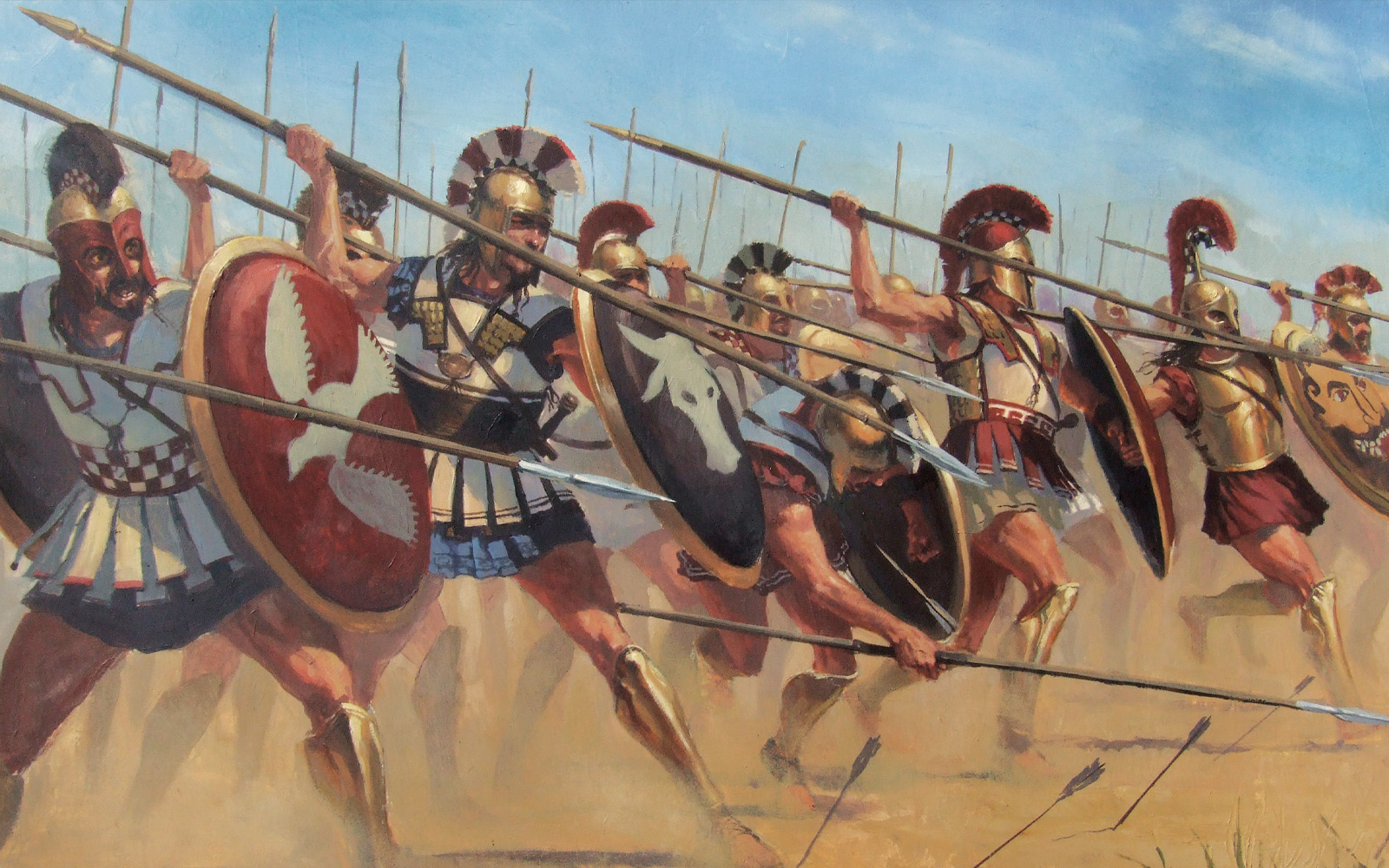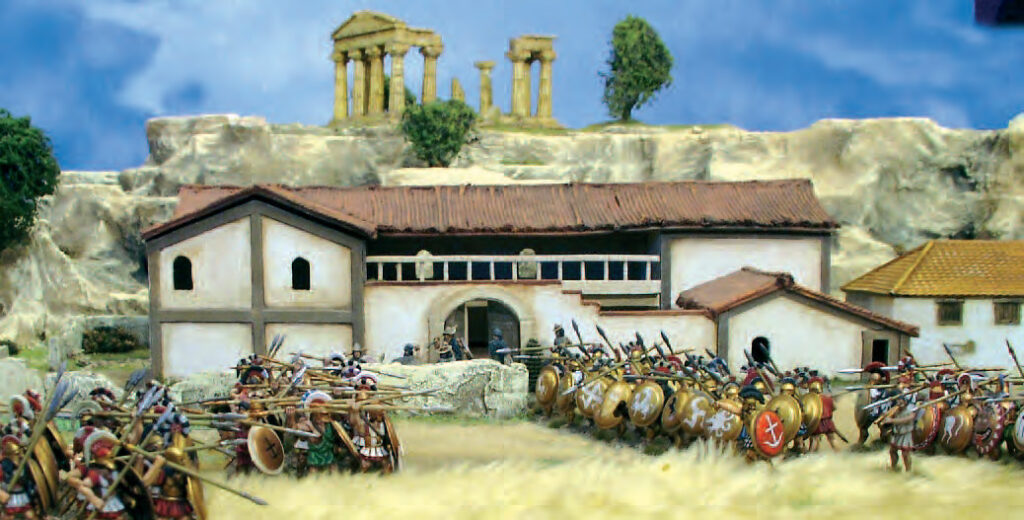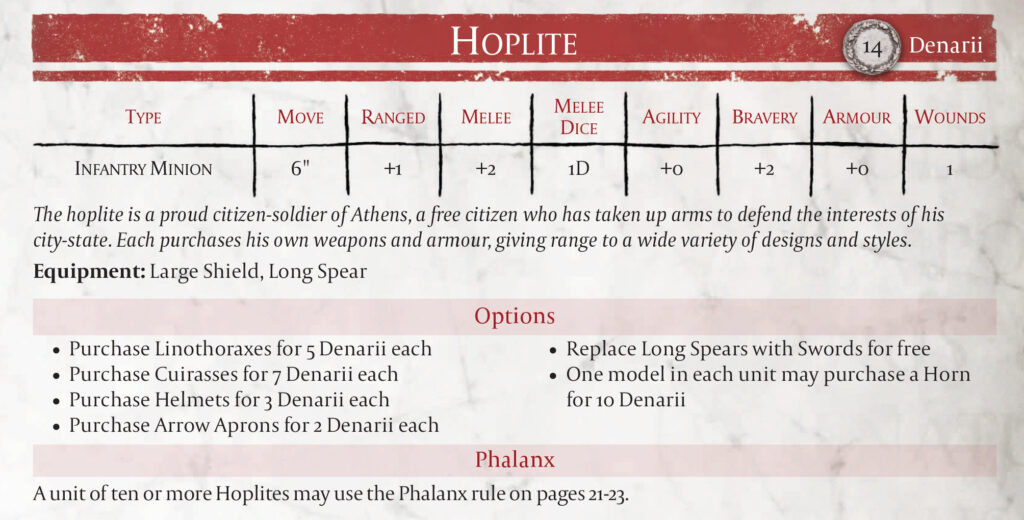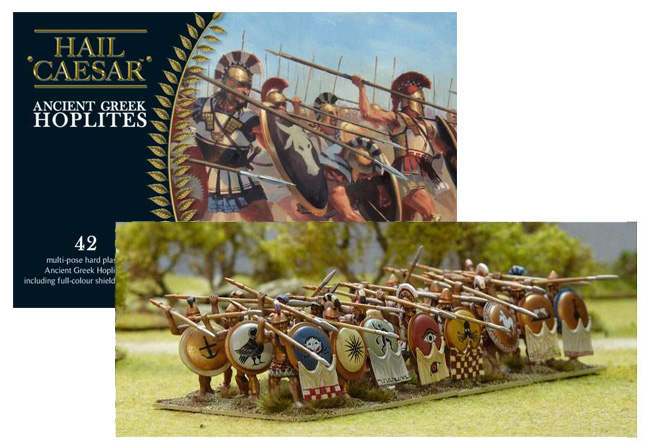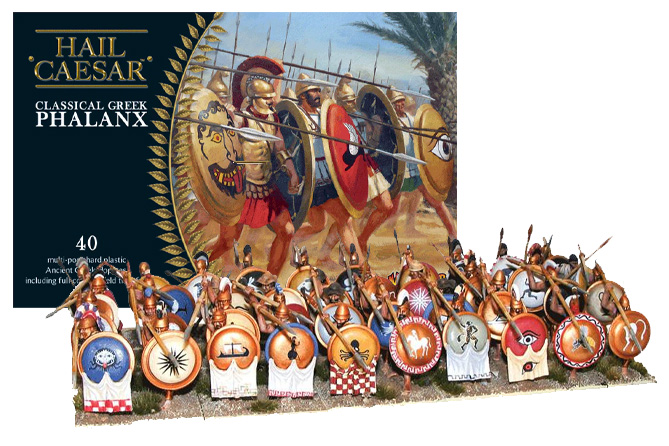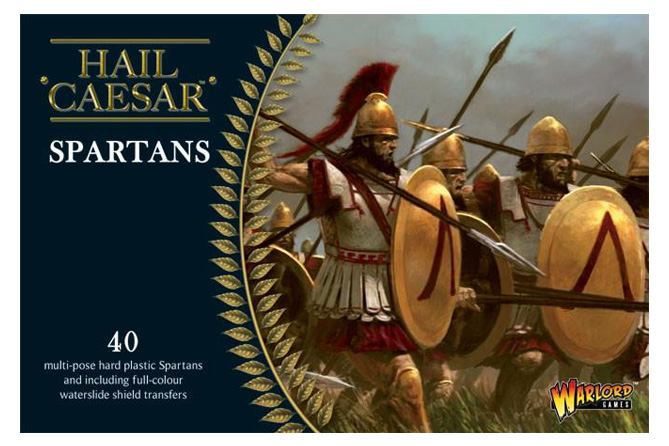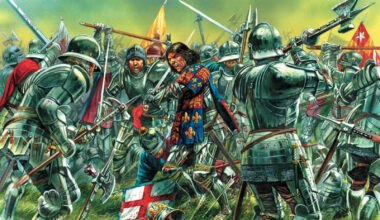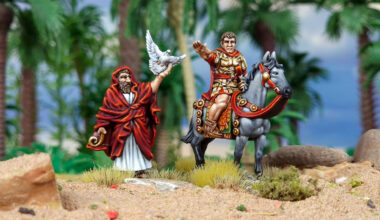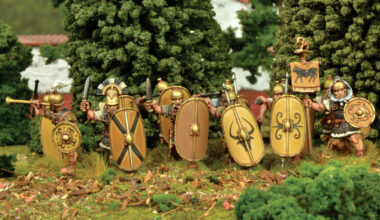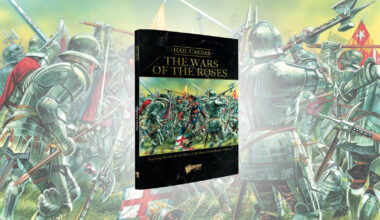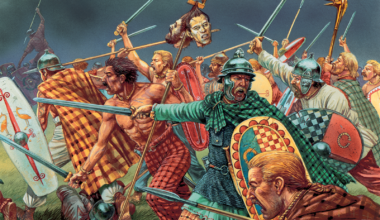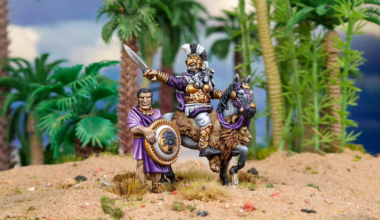This time on Forces of Fame, we’re taking a look at an armoured juggernaut that dominated warfare in its region for centuries, rolling over enemies with ease and becoming the pre-eminent form of combat across thousands of miles. I’m talking, of course, about the legendary hoplite phalanxes of Ancient and Classical Greece (and parts far beyond!).
The hoplite was, at his core, a middle-class citizen-soldier of the Greek city-states. This model was by no means unique to Greece, but it was around the Aegean that it became truly iconic. In the vast majority of city-states, conscription was essentially universal for men, with a period of training being followed by several years in a ‘ready reserve’ – large peacetime standing armies were unknown in the period. The average hoplite was therefore a member of his city’s middle class, likely a tradesman or artisan, and would be expected to mobilise only in times of war. He would most probably consider military service an important part of his civic duty, and part and parcel of his coveted citizenship. The Spartans, of course, were historically the outliers in this case, being an entire culture of professional soldiery, so I’ll be focusing on the more ‘typical’ hoplite of a city-state such as Athens or Thebes.
The word ‘hoplite’ derives from hoplon, a term referring to the full panoply of armour and weapons borne by a warrior. In essence, it translates in exactly the same way as the medieval gen d’armes or ‘man at arms’. The specific armour of the hoplite varied over the centuries, from the linothorax (a rather mysterious textile armour, the construction of which historians are divided on) to the classic bronze ‘bell’ and ‘muscle’ cuirasses, with bronze greaves (shin-guards) and helmet (the most recognisable being the ‘Corinthian’ type), but the weapons remained the same throughout the period. As a primary armament the hoplite carried a dory, a 7-9 foot long ash spear designed for both overhand and underhand thrusting in the line of battle. For a sidearm, he would carry a short sword of either the straight-bladed xiphos type, or the forward-curving kopis, rather like a modern Gurkha kukri in form and function.
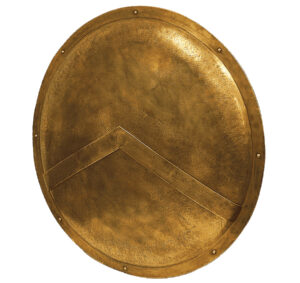
The most important part of a hoplite’s panoply was the large round aspis shield, constructed of wood with a thin covering of bronze, and painted with eye-catching designs that either invoked the gods, the wielder’s ancestry, or the symbol of his city. This shield was designed to protect both the wielder and the man to his left, and was utterly crucial to the function of the phalanx formation employed so successfully around the Mediterranean. The entire panoply was provided by the hoplite himself, and was not cheap to manufacture or procure. This led to items being passed down through some families, while poorer hoplites might well go without certain pieces of armour, but each man would have at the bare minimum his aspis and dory. Later in the period, some states did experiment with mass-producing and issuing equipment, but the practice does not seem to have become widespread.
Battles of the hoplite era were curious affairs. While light cavalry and skirmishers armed with javelins, slings, and bows were often present, the main combat unit was the phalanx, a close-order formation many ranks deep, with the shields of the front rank overlapping and the spears of the first few ranks levelled. While inherently similar to later ‘pike-block’ formations, the phalanx was a primarily offensive rather than defensive grouping. Really only capable of fighting on level, open terrain, and moving at a steady walk, in order to maintain some semblance of cohesion, the manoeuvre phase of most battles must have consisted of rather a great deal of awkward ‘shuffling’, as opposing phalanxes sought to get into the best possible position before the charge. When two phalanxes met, there would be an immediate clash of spears, during which time the rear ranks would press forward with their shields to lend momentum to their attack. Hoplites would aim for the vulnerable thighs, arms, and faces of their opponents, and this phase could last for a significant amount of time if neither side broke immediately. When a man fell in the first rank, he would be replaced by a comrade from the rear, as the two blocks sought to gain the upper hand. Eventually, many of the spears in the first ranks would be shattered, and the fight would devolve into many individual combats fought with sidearms, although in all probability most phalanxes broke before reaching this stage.
Compared to the day-long slugging matches of later eras, hoplite battles tended to be rather short and often comparatively bloodless. Much of this seems to be due to the tendency of phalanxes to break and flee quickly if their opponents gained the upper hand, rather than fighting to the last man. Equipment was often discarded to hasten their flight, with the first item to go being the aspis. To lose one’s shield was considered a great disgrace, and the word rhipsapsis (‘shield-flinger’) was synonymous with ‘coward’. The lower casualty rates likely led to a climate in which many conflicts were feasible resolutions to political issues, rather than society-shattering catastrophes (although I imagine it would be hard to convince a hoplite staring his enemy in the face of this), possibly contributing to the fractious inter-city relations of the period.
As the iconic troops of their period, hoplites are of course well-represented in our ancient battles rules-sets – Hail Caesar and SPQR!
In Hail Caesar
Benefitting from the Phalanx and Long Spears special rules, and best represented by the Heavy Infantry Long Spear Phalanx stats from page 94 of Hail Caesar, we can see the hoplite phalanx can be a significantly durable and dangerous force on the tabletop. Able to defend itself admirably from cavalry, and very difficult to Break in hand-to-hand fighting, the best counters to a phalanx are, as they were historically, a phalanx of your own, or significant amounts of ranged firepower!
In SPQR
In SPQR, the hoplite doesn’t have quite so many of his comrades beside him, but can still benefit from his training and discipline. A unit with the Phalanx special rule with at least 10 models may form one, gaining a number of bonuses. On the attack, the entire front rank of a Phalanx contribute their Melee dice to the pool, not just those in base contact – this can be very useful for dealing with pesky smaller units that might otherwise be difficult to get to grips with. On the defensive, enemies to their front suffer a -1 to all Melee checks they make against the Phalanx, which also receives a +1 to all Bravery checks it must make. Finally, if any cavalry are fool enough to charge a Phalanx with Long Spears or Pikes, they can expect a Lethal reception!
As an individual (taking a bog-standard Athenian Hoplite as the example), we find the Hoplite to be a solid enough fighter, but unprotected apart from his Large Shield. If taken ‘as-is’, he’s a great representation of a very poor Hoplite, ideal for filling out an Athenian warband’s numbers. For 10 Denarii more, however, you can give your Hoplites Cuirasses and Helmets, improving their survivability significantly and making them far more likely to survive to get stuck in with their Long Spears. Many Warbands can also access Hoplites as mercenaries, and should you find yourself fighting against enemy Phalanxes, they can make a great counter to protect the rest of your forces.
Take up aspis and dory. Don your full panoply. Listen to the Strategos – we march to war!
Other Articles in the Forces of Fame Series:
Bolt Action (Second Edition) – The Tiger I; Princess Elizabeth (Jubilee Special); Japanese Special Naval Landing Force; M18 Hellcat; Centurion Mk III; British Airborne; M4A3E8 Sherman ‘Easy Eight’; German Fallshirmjäger; FlaK 88; Panzer IV (Early War); Matilda II; T-34/76; Panzer 38(t); Soviet IS-2;
Blood Red Skies – Messerschmitt Bf 110; Ki-43 II ‘Oscar’; Grumman F9F Panther; Vought F4U Corsair;
Victory at Sea – The Bismarck; Fletcher-Class Destroyers; Kongō; Yamato-class Battleships;
Pike & Shotte (& Pike & Shotte Epic Battles) – Cuirassiers; Polish Winged Hussars; Dragoons;
Black Powder (& Black Powder Epic Battles) – The Iron Brigade; 95th Rifles; Zulus;
Black Seas – HMS Victory;
Hail Caesar / SPQR – Dacian Falxmen;
